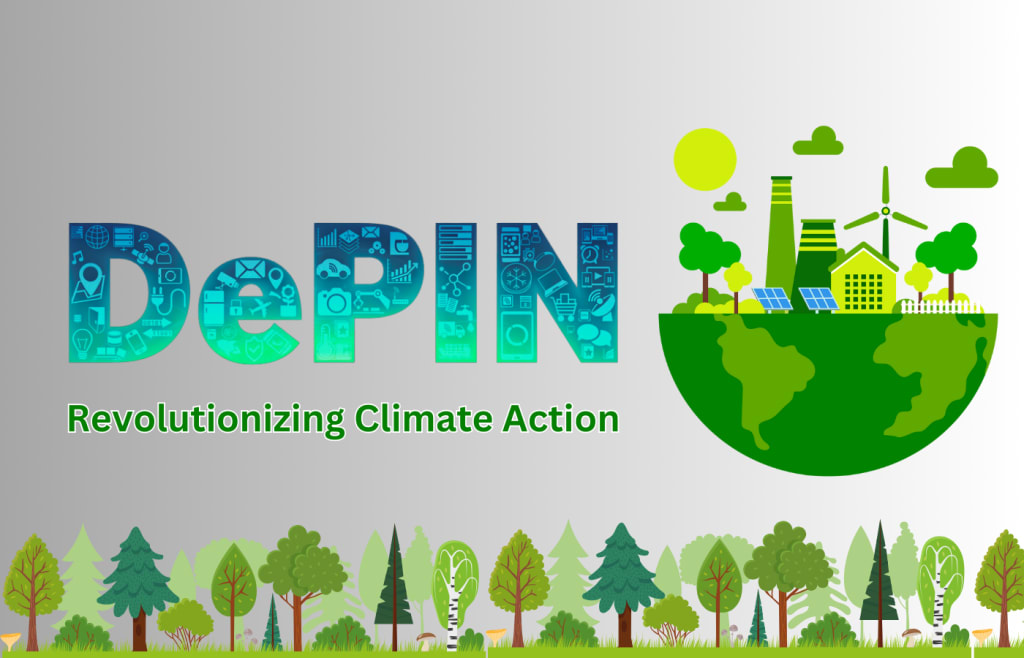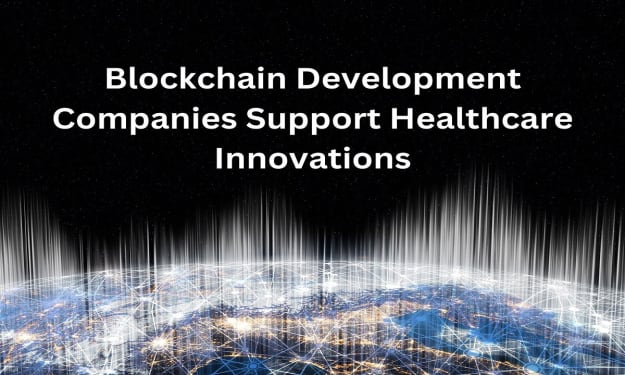DePIN: The Future of Climate Action with Decentralized Environmental Monitoring
Discover how to launch a DePIN marketplace and join the movement for decentralized environmental monitoring, driving positive change for a sustainable future.

Let’s face it: the climate crisis isn’t just knocking on our door; it’s barging right in, uninvited and unwelcome. With every passing day, the need for urgent action becomes more glaringly obvious. From extreme weather events to rising sea levels, the signs of a planet in distress are all around us.
But amidst this looming crisis, there shines a beacon of hope: DePIN. This isn’t just another fancy acronym; it’s a game-changer in the world of environmental monitoring. So buckle up, because we’re about to embark on a journey into the heart of this revolutionary concept.
Introducing DePIN: A Paradigm Shift in Environmental Monitoring
Say hello to DePIN—the Future of Climate Action. But what exactly is DePIN, and why is it causing such a stir in environmental circles? Well, dear reader, allow me to illuminate.
At its core, DePIN represents a seismic shift in how we monitor our planet’s health. It’s about decentralization, community empowerment, and harnessing the power of technology for good. Gone are the days of relying on outdated, centralized systems; DePIN puts the power back where it belongs—in the hands of the people.
What is DePIN?
Now that we’ve piqued your curiosity, let’s dive a little deeper into what DePIN actually stands for. DePIN, my friends, is short for Decentralized Physical Infrastructure Networks. But don’t let the fancy terminology scare you off; at its essence, DePIN is all about democratizing environmental monitoring.
Think of it as a network of sensors spread far and wide, like a spider’s web, capturing vital data on everything from air quality to noise levels. But here’s the kicker: unlike traditional monitoring systems, which are often controlled by big corporations or government agencies, DePIN puts the power in the hands of the people. It’s a bottom-up approach to climate action, driven by community engagement and collective responsibility.
The Power of Decentralization: How DePIN Works
So, how exactly does DePIN work its magic? Well, it all boils down to decentralization. Instead of relying on a centralized authority to collect and analyze data, DePIN leverages the collective power of a distributed network of sensors.
Picture this: sensors dotted across cities and towns, collecting real-time data on air pollution, temperature, and more. But here’s where it gets really cool: because the network is decentralized, there’s no single point of failure. If one sensor goes down, the rest keep chugging along, ensuring that vital data continues to flow uninterrupted.
From Concept to Reality: The Birth of DePIN
But where did this revolutionary idea come from, you ask? Well, like all great innovations, DePIN started as a seed of an idea—a vision for a better, more sustainable future.
It was born out of a recognition that traditional approaches to environmental monitoring were no longer sufficient—that we needed a new paradigm, one that empowered communities and put data in the hands of the people. And so, with a little ingenuity and a lot of hard work, DePIN was born—a shining example of what’s possible when we dare to dream big and think outside the box.
DePIN solutions offer a revolutionary approach to environmental monitoring, empowering communities with real-time data and actionable insights. By harnessing the power of decentralization, DePIN is paving the way for a more sustainable future.
The Need for Change
In the face of a rapidly changing climate, it’s clear that we need to shake things up. The traditional methods of monitoring our planet’s health simply aren’t cutting it anymore. We’re relying on outdated systems that struggle to keep pace with the complex challenges we’re facing. From inaccurate predictions to a lack of real-time data, these limitations are holding us back from truly understanding—and addressing—the scope of the crisis at hand.
Limitations of Traditional Climate Monitoring
So, what exactly are these limitations, and why are they such a cause for concern? Well, for starters, traditional climate models are hamstrung by their reliance on outdated technology. These models, developed decades ago, were never designed to handle the level of detail and complexity we need to accurately predict climate patterns. They struggle to incorporate crucial factors like cloud cover, ocean currents, and the carbon cycle, leading to predictions that are, at best, educated guesses.
Why Current Approaches Fall Short?
But it’s not just the models themselves that are problematic; it’s also the way we collect and analyze data. In many cases, this process is centralized, meaning that a handful of organizations or governments have a monopoly on the information. This lack of transparency and accessibility can lead to skewed results and a failure to capture the full picture of what’s happening on the ground.
Bridging the Gap: Addressing the Challenges
So, how do we overcome these challenges and usher in a new era of climate monitoring? Well, it’s going to take a concerted effort from all corners of society. We need to invest in new technologies that can provide the level of detail and accuracy we need to make informed decisions. We need to break down the barriers that prevent communities from accessing vital data about their environment. And perhaps most importantly, we need to shift towards a more decentralized model of data collection and analysis—one that empowers individuals and communities to take ownership of their own environmental destiny.
Exploring Web3 and Decentralization
But what does all this talk of decentralization have to do with climate monitoring? Well, as it turns out, quite a lot. Web3, the next evolution of the internet, is all about decentralization. It’s about giving power back to the people and breaking down the centralized systems that have dominated the digital landscape for far too long.
Web3: Beyond Buzzwords
But what exactly is Web3, and how does it differ from the internet as we know it? At its core, Web3 is about more than just browsing the web; it’s about interacting with it in new and meaningful ways. It’s about peer-to-peer transactions, decentralized applications, and a whole host of other innovations that promise to revolutionize the way we interact online.
Decentralization Demystified
So, what does decentralization actually look like in practice? Well, imagine a world where data isn’t stored on centralized servers owned by big corporations, but instead is distributed across a network of thousands—or even millions—of individual computers. This distributed approach not only makes data more secure and resilient to cyber attacks, but it also gives individuals more control over their own digital footprint.
How Web3 Enables DePIN's Vision?
But how does all this tie back to DePIN and the future of climate action? Well, dear reader, that’s where things get really interesting. You see, DePIN harnesses the power of Web3 and decentralization to create a new paradigm for environmental monitoring. By leveraging the collective power of a distributed network of sensors, DePIN is able to provide real-time data on everything from air quality to soil moisture levels, giving communities the information they need to make informed decisions about their environment. And because the data is decentralized, there’s no single point of failure—meaning that even if one sensor goes down, the rest of the network can keep chugging along, providing vital insights into our changing planet.
The Role of Community
When it comes to tackling the monumental challenge of climate change, one thing is clear: we can’t do it alone. It takes a village—or in this case, a global community—to make a real difference. That’s where DePIN comes in, paving the way for a new era of environmental monitoring that puts power back into the hands of the people.
Empowering Individuals: Citizen Participation in Climate Action
Gone are the days of sitting on the sidelines, waiting for governments or big corporations to take action. With DePIN, individuals like you and me have the opportunity to be active participants in the fight against climate change. Whether it’s installing a sensor in your backyard or contributing data from your community, every little bit helps.
The Rise of Community Ownership
But it’s not just about individual actions; it’s also about coming together as a community to tackle shared challenges. With DePIN, communities have the opportunity to take ownership of their environmental data, using it to advocate for change and push for stronger regulations. It’s about harnessing the power of collective action to drive meaningful progress.
Incentivizing Participation: The DePIN Model
Of course, none of this would be possible without the right incentives in place. That’s where the DePIN model comes in, rewarding individuals and communities for their contributions to the network. Whether it’s through tokens, rewards, or other incentives, DePIN ensures that everyone has a stake in the game and a reason to get involved.
The Impact of DePIN
But what kind of impact can DePIN really have? As it turns out, quite a lot. From providing real-time data for informed decision-making to democratizing environmental monitoring on a global scale, the potential benefits are immense.
Real-Time Data for Real Change
One of the most powerful aspects of DePIN is its ability to provide real-time data on everything from air quality to soil moisture levels. This data isn’t just useful for scientists and policymakers; it’s also invaluable for everyday people who want to make informed decisions about their environment.
Democratizing Environmental Monitoring
But perhaps the most revolutionary aspect of DePIN is its ability to democratize environmental monitoring. By putting the power back into the hands of the people, DePIN ensures that everyone has access to vital information about their surroundings. It’s a game-changer for communities around the world, empowering them to take control of their own environmental destiny.
Unlocking New Solutions: DePIN Use Cases
And finally, let’s not forget about the countless new solutions that DePIN makes possible. Whether it’s using data to identify and address pollution hotspots or incentivizing individuals to reduce their carbon footprint, the possibilities are endless. With DePIN, the future of climate action has never looked brighter.
How to Launch a DePIN Marketplace?
So, you’re ready to dive into the world of decentralized environmental monitoring with DePIN. But where do you start? Fear not, dear reader, for we’re about to embark on a journey into the nuts and bolts of launching your very own DePIN marketplace.
Understanding the Basics: What You Need to Know
First things first, let’s get clear on what exactly a DePIN marketplace is and why it’s such a game-changer in the world of climate action. At its core, a DePIN marketplace is a platform that connects individuals and communities with the data they need to monitor and understand their environment. It’s a hub for sharing information, collaborating on solutions, and driving positive change on a global scale.
Step-by-Step Guide to Setting Up Your DePIN Marketplace
Now that we’ve got the basics down, it’s time to roll up our sleeves and get to work. Setting up a DePIN marketplace may seem daunting at first, but fear not—we’ve broken it down into a simple, step-by-step guide that anyone can follow.
First, you’ll need to choose a platform for your marketplace. There are plenty of options out there, from off-the-shelf solutions to custom-built platforms. Consider your budget, technical expertise, and specific needs when making your decision.
Next, you’ll need to gather the necessary resources and data to populate your marketplace. This might include sourcing sensors, collecting environmental data, and building partnerships with local communities and organizations.
Once you’ve got everything in place, it’s time to launch your marketplace and start spreading the word. Use social media, email marketing, and other channels to reach potential users and encourage them to join the platform.
And finally, don’t forget to continuously monitor and update your marketplace to ensure it remains relevant and effective. Listen to feedback from users, iterate on your design and functionality, and always be on the lookout for new opportunities to expand and improve your platform.
Tips for Success: Navigating Challenges and Maximizing Impact
Of course, no journey is without its challenges, and launching a DePIN marketplace is no exception. From technical hurdles to logistical roadblocks, there are plenty of obstacles that can stand in your way. But fear not, for we’ve compiled a list of tips to help you navigate these challenges and maximize the impact of your marketplace.
First and foremost, don’t be afraid to ask for help. Whether it’s reaching out to experts in the field or seeking guidance from other marketplace owners, there’s plenty of support available to help you overcome any obstacles you may encounter.
Secondly, be prepared to adapt and evolve. The world of decentralized environmental monitoring is constantly changing, and your marketplace needs to evolve with it. Stay up to date on the latest trends and technologies, and be willing to pivot your strategy if necessary.
And finally, never lose sight of your ultimate goal: driving positive change for the planet. Keep your eyes on the prize, stay true to your values, and never forget the impact that your marketplace can have on communities around the world.
Conclusion
In conclusion, launching a DePIN marketplace is not only an exciting opportunity to make a difference in the fight against climate change, but it’s also a chance to join a global movement for positive change. By embracing the future of decentralized environmental monitoring, you’re not just taking action for a sustainable tomorrow—you’re helping to shape it. So what are you waiting for? Let’s roll up our sleeves and get to work. Together, we can build a brighter, greener future for all.
About the Creator
Enjoyed the story? Support the Creator.
Subscribe for free to receive all their stories in your feed. You could also pledge your support or give them a one-off tip, letting them know you appreciate their work.






Comments
There are no comments for this story
Be the first to respond and start the conversation.